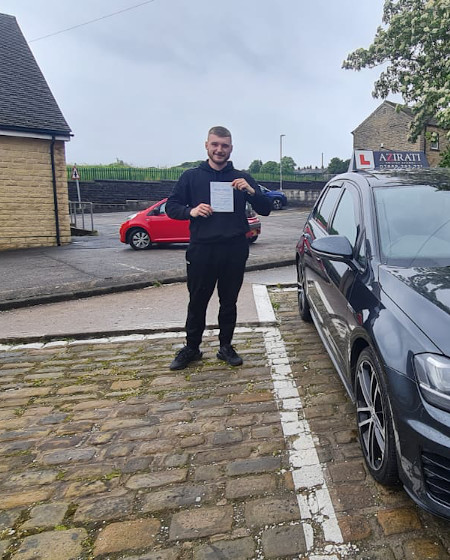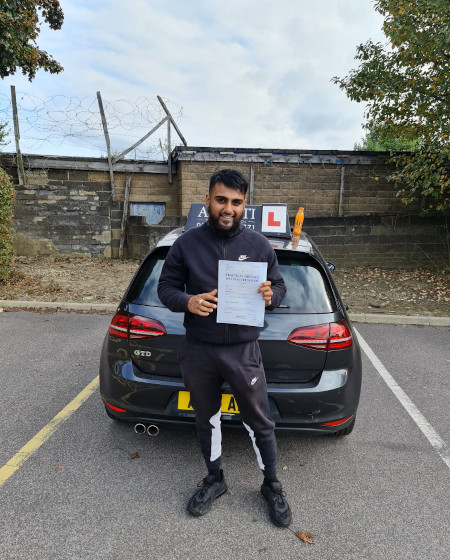
[xfield_homepage-h1]
- [xfield_benefit-list1]
- [xfield_benefit-list2]
- [xfield_benefit-list3]
- [xfield_benefit-list4]
[xfield_form-heading]
The ability to drive is a crucial skill and could be your ticket to independence and freedom. You might want to learn how to drive, whether you commute to work, pick up your kids from school, or simply because you want to make getting from A to B more easy. Our friendly and experienced driving instructors can help you.
We welcome all levels of learners, from students just 17 who want to start lessons, to those who need our other driving lesson packages.
Automatic and manual refers to the type of transmission (or gears) that is in the car. Manual cars require that you change the gears at the right time. As the name suggests an automatic car automatically changes the gears at the appropriate time.
- What Is The Difference Between Manual Cars And Automatic Cars?
- Which Are More Popular: Automatic or Manual Cars?
- What Are The Benefits Of Learning To Drive In An Automatic Car?
- Are There Any Downsides To Driving An Automatic Car?
- Driver and Vehicle Standards Agency (DVSA) Approved Driving Instructors
- Your First Scotland Driving Lesson
- The Driving Test Centre You Should Choose
- [xfield_faq-title]
What Is The Difference Between Manual Cars And Automatic Cars?
Driving a manual car isn’t for everyone, especially if you live in a busy area where shifting gears and controlling the clutch are a daily part of your driving. Perhaps you’ve had driving lessons in a manual vehicle before but found it difficult to handle the gears. A driver may also choose an automatic car because they are unable to change gears as easily due to a disability. If this is you then don’t worry as you are not the only one. Many people find it easier to learn how to drive and pass their driving test in an automatic .
An automatic transmission car changes the gears automatically for you as your speed increases or decreases. If your car has a manual transmission, you will have to change the gears by yourself.
There are three pedals in manual cars, the clutch, brake, and the accelerator. They also come with a gear stick, used in conjunction with the clutch to change gears. You operate the clutch with your left foot, and the other two with your right foot. Simply press the clutch down to change gear. When the clutch is down, you can then move the gearstick to select the required gear. A clutch pedal is standard on most manual cars, but some cars use a trigger or a button to replace it.
An automatic car does without a clutch because the gears are changed automatically. As the vehicle speeds up, the gears will automatically change higher and as it slows down the gears will change to a lower gear. In an automatic car you don’t need to know how to coordinate the clutch, gear lever and accelerator. This makes learning to drive an automatic car a lot easier than learning how to drive a manual. A footrest replaces the clutch and is used instead of a pedal. Automatic cars don’t have a clutch, so it is much harder to stall them. It is also impossible to put an automatic car in the wrong gear or grind the gears.
Manuals also have a different gear stick from Automatics. Manual cars have five, possibly 6, forward gears and one reverse gear. The four main operations of an Automatic’s gear stick are (P), park, (D) drive, (N) neutral, and (R) reverse. There are many variations but these are the main four operations. The operation are very simple, with perhaps the exception of neutral that is used when your vehicle is stopped at traffic lights or in heavy congestion.
Another difference is that manual cars will not be move on the flat without using the accelerator, whereas an automatic car if put into drive or reverse will move all by itself. While it will move it won’t be very fast until you press the accelerator. This is something to keep in mind if you want to switch from a manual to an automatic car.
If you have further questions about our Scotland automatic driving lessons contact us today to book your first lesson
Which Are More Popular: Automatic or Manual Cars?
Manual cars are more popular than automatics in the UK, but the number of new automatics being built is increasing. Automatic cars tend to be more expensive to purchase, run and maintain. They tend to consume more fuel than manual cars. Additionally, they are more expensive to maintain and to insure because they are more complex to make.



What Are The Benefits Of Learning To Drive In An Automatic Car?
Although learning to drive in an automatic car can be easier than driving a manual car, it all depends on your specific difficulties. Learning in an automatic car won’t help you if your problem is observation
If you are having difficulty with clutch control or gear changes, learning to drive an automatic will be a lot easier. There is much less to consider when learning to drive in a city with lots of congestion. You will need to constantly change your gear because of the stop-start nature involved in driving in densely populated areas. Even if you’re an experienced driver, this can be quite frustrating.
An automatic car makes it easier when doing your driving test as you do not have the risk of stalling the car and any struggles you have with clutch control. Because there are no gears so you do not need a clutch in an automatic car, it is much easier to perform manoeuvres like a turn in traffic or a hill start.
You might have difficulty managing the gears of a manual car. If this is the case, it might be easier to learn to drive in an automatic car.
Are There Any Downsides To Driving An Automatic Car?
Automatic cars are more costly to purchase, maintain and run than manual cars. Because of this, automatic driving lessons tend to be more expensive than manual lessons.
One downside to learning how to drive in an automatic car is that it does not allow you to drive a manual car. Your licence will allow both if you pass your manual driving test.
It is possible that your future choices in buying or renting a vehicle or van may be limited by taking your driving test in an automatic car. You will have to take your driving test again if you decide to drive a manual car.
Pass rates for automatic cars are usually lower than those in manual cars. This shouldn’t discourage you, however, as many learners pass their driving test with automatic cars each year.
If you have further questions about our Scotland automatic driving lessons contact us today to book your first lesson
Driver and Vehicle Standards Agency (DVSA) Approved Driving Instructors
Our Driving Instructors offer high-quality driving lessons in Scotland for drivers of all ages abilities and levels. They are approved and registered with the Driver and Vehicle Standards Agency (DVSA) and have years of experience No matter if you are a total novice, a returning driver after a break, or an experienced driver looking to improve your skills, our driving instructors will make you feel relaxed and confident.
No matter your reasons for learning to drive are, our driving instructors can help you to pass your driving test quickly and inexpensively. They can provide you with a range driving lessons and courses that will help get your driving licence in the shortest time possible.
If you choose to learn with one our driving instructors in Scotland, then you can rest assured that you are in the hands of a professional driving instructor who is qualified to help you improve your driving skills and teach you to drive safely. They want to help you become a confident, competent driver.



Your First Scotland Driving Lesson
Your driving instructor will begin with an introduction chat to learn about your driving skills and experience. Don’t worry if you have not had driving lessons before as most people haven’t They will then check that your provisional license is valid, check your eyesight and go over the basics of the car that you will be learning in.
Local Scotland driving instructors know the area better than anyone. Your driving lesson will be held in quiet surroundings away from any traffic so that you can slowly improve your confidence with driving. The basics of driving, including how to steer and control the clutch, as well as moving off and stopping, will be covered first. As you gain driving proficiency, you’ll be faced with new challenges.
Your instructor will plan each lesson carefully so that you have the opportunity to drive through many junctions, roundabouts, pedestrian crossings in an easy-to-remember setting.
It is crucial that you learn to drive safely right from the start as bad habits can be difficult to break. Driving instructors are specially trained to show you how to drive safely and pass your driving exam. They have extensive experience and knowledge of driving that they will use to help make you a confident and safer driver.
Your driving instructor will give you a record of your driving progress. Your progress record will include all the topics that you must master in order to drive safely throughout your driving career. These techniques include parallel parking, turning in the road (3 point turn), reverse around corners and emergency stops. It will show you your current stage and how much you have still to learn.
If you have further questions about our Scotland automatic driving lessons contact us today to book your first lesson
The Driving Test Centre You Should Choose
The choice of a test centre is up to you, but it can have an impact on how you perform and whether you pass. We recommend that the test centre is located near where you have taken your lessons. This will allow you to be more familiar with the roads and the surrounding areas when you take your driving exam.
If you have further questions about our Scotland automatic driving lessons contact us today to book your first lesson
[xfield_faq-title]
Are automatic lessons more expensive?
Automatic driving lessons are more expensive as the costs of insuring automatic cars is around 43% higher than manual cars of the same class – this is because automatic cars generally cost more to repair.
Should you put automatic in neutral when stopped?
Never put your vehicle in neutral at traffic lights You will be shifting gears every time to meet a stop light, subjecting them to unnecessary wear. You may have to replace them sooner than you thought. Avoid all this by letting the brakes do their job: leave the engine in drive and step on the brakes at the stoplight
How long does it take to pass automatic?
However, there's less to get to grips with when you take automatic driving lessons. This means many learners are able to pass after just 20 hours of lessons, as long as they also get some private practice.
Is it worth getting an automatic license?
Learning to drive in an automatic might help you take fewer driving lessons in order to reach test standard. What's more, if you've been really struggling with a manual then going for an automatic could mean the difference between you getting your licence and not getting your licence.